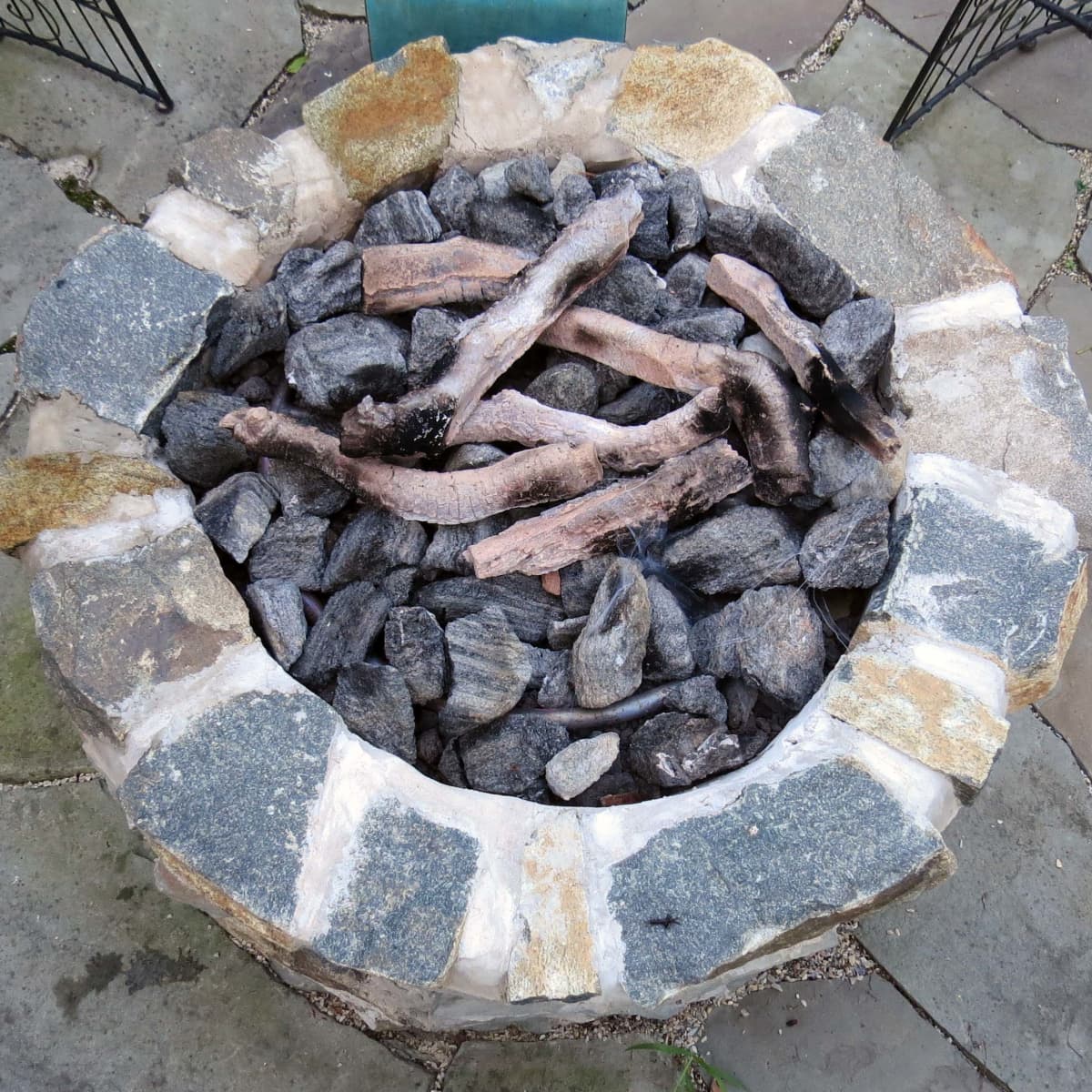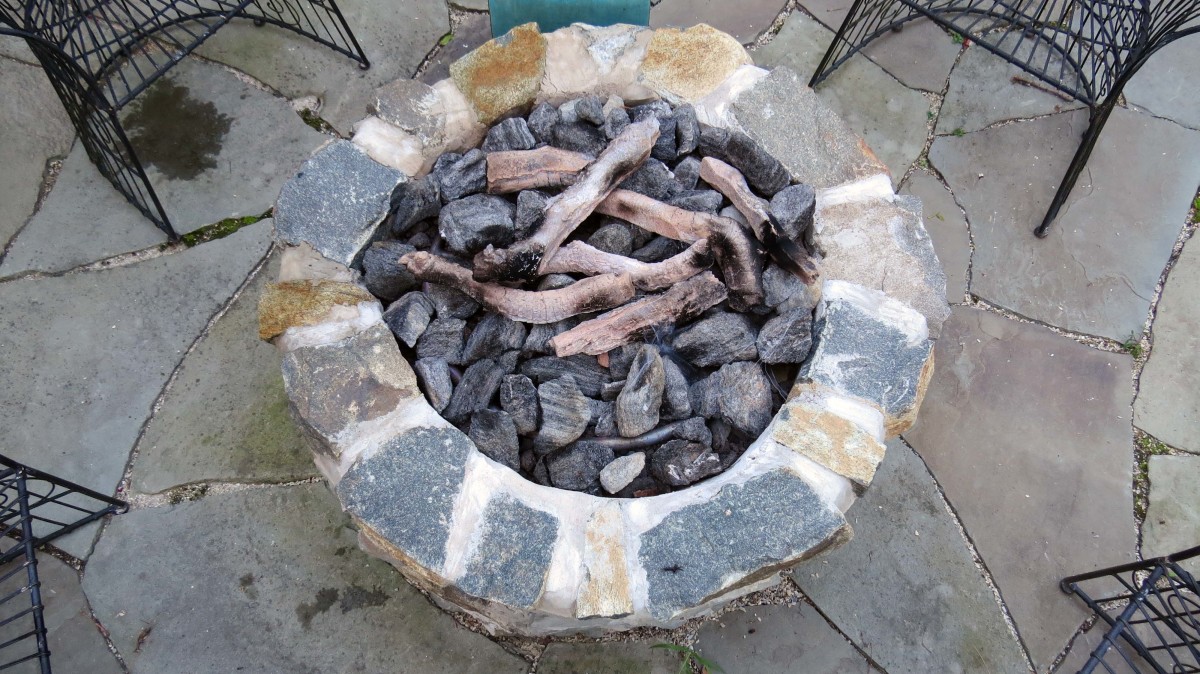To arrange lava rocks on a gas fire pit, stack larger chunks into a pyramid shape to redirect convective heat effectively, ensuring the tallest stack in the middle for optimal heat extraction and distribution. Carefully interlock the rocks to prevent tumbling while verifying stability before heating.
Proper stacking enhances heat circulation for a cozy outdoor fire experience. Various resources provide insights on lava rock arrangement, from maximizing heat flow around seating areas to ensuring safe distances between the burner and the rock tray. Additionally, following manufacturer instructions or seeking professional guidance can help achieve the desired layout for your gas fire pit setup.
Experimenting with different placements and configurations can enhance both the aesthetic appeal and functional efficiency of your fire pit ensemble.


Credit: m.youtube.com
Choosing The Right Type Of Rocks
When setting up a gas fire pit, selecting the appropriate rocks is crucial for both aesthetics and functionality. Understanding the differences and benefits of lava rocks and fire glass can help you make an informed decision.
Understanding The Difference Between Lava Rocks And Fire Glass
Lava rocks are natural stones that are formed when volcanic magma cools. They are porous and lightweight, making them excellent for dispersing heat and providing a rustic look to your fire pit. Fire glass, on the other hand, is tempered glass that comes in various colors and shapes, offering a modern and sleek appearance.
Benefits Of Using Lava Rocks For Gas Fire Pits
- Lava rocks are affordable and readily available in different sizes to suit your fire pit.
- They retain heat efficiently and radiate warmth, creating a cozy ambiance for outdoor gatherings.
- The porous nature of lava rocks promotes air circulation, which helps the gas burn more cleanly and consistently.
- They are durable and low-maintenance, requiring minimal upkeep compared to other filler options.

Credit: dengarden.com
Preparing The Gas Fire Pit
Before arranging lava rocks on your gas fire pit, it’s crucial to ensure the gas components are in optimal condition for safe and efficient operation. Follow these steps to prepare your gas fire pit for lava rock arrangement.
Checking The Gas Burner And Tray
Inspect the gas burner and tray to verify they are clean and free from any obstructions. Ensure that the gas burner is securely in place and there are no signs of damage or wear that could affect its performance.
Adjusting The Lava Rock Placement
When placing the lava rocks, ensure they are evenly distributed across the gas burner and tray area. Make certain that each rock is positioned to allow proper gas flow and heat distribution for an effective fire pit experience.
Arranging Lava Rocks On A Gas Fire Pit
Arranging lava rocks on a gas fire pit is simple. Start by placing larger rocks at the bottom, forming a pyramid shape to maximize heat distribution. Ensure the stack is stable and won’t tumble down when heated. Lay the lava rock tray directly on the gas burner, creating an effective gas fire pit arrangement.
Stacking Lava Rocks For Efficient Heat Distribution
To achieve optimal heat distribution, stack the lava rocks in a pyramid formation within the fire pit. This allows the heat to concentrate in the middle of the ring, extracting more useful heat. As the heat rises, a well-structured stack conveys the heat more evenly through the rocks, ensuring efficient heat distribution.
Ensuring Stability And Safety
When arranging lava rocks, it is vital to ensure the stack is stable and secure. Stack the rocks in an interlocking manner, testing their stability by carefully pulling or pushing to confirm they are securely in place. The porous nature of lava rocks provides inherent friction between pieces, contributing to a stable stack.

Credit: www.amazon.com
Enhancing The Fire Pit Aesthetics
Enhancing the fire pit aesthetics with lava rocks involves stacking larger chunks in a pyramid shape to redirect convective heat. By creating a stable, interlocking stack, the rocks heat up efficiently, radiating warmth to the surroundings for a cozy outdoor ambiance.
Options For Adding Fire Glass And Ceramic Log Set
Maintenance And Safety Tips
Proper maintenance and adhering to safety measures are crucial when arranging lava rocks on a gas fire pit. By following these guidelines, you can ensure the longevity and safe operation of your fire pit.
Cleaning And Maintaining Lava Rocks
Regular cleaning and maintenance of the lava rocks in your gas fire pit contribute to its optimal performance. Here are some tips to keep your lava rocks clean and in good condition:
- Remove the lava rocks from the fire pit and place them in a bucket.
- Rinse the rocks with water to remove any loose debris or ash.
- If there are stubborn stains or buildup, scrub the rocks gently with a soft brush or sponge using a mild detergent solution.
- Rinse the rocks thoroughly to remove any soap residue.
- Allow the rocks to dry completely before placing them back in the fire pit.
Regular cleaning will help maintain the appearance and functionality of the lava rocks, ensuring a clean and beautiful flame every time you use your gas fire pit.
Understanding Safety Measures For Gas Fire Pits
Gas fire pits can be a wonderful addition to your outdoor space, providing warmth and ambiance. However, it is important to prioritize safety when using and arranging lava rocks on a gas fire pit. Consider the following safety measures:
- Always refer to the manufacturer’s instructions for your specific gas fire pit model.
- Ensure proper ventilation by positioning the fire pit in an open area away from combustible materials.
- Regularly inspect the gas connections and hoses for any leaks or damage. Replace any faulty components immediately.
- Never leave the fire pit unattended while it is in use.
- Do not overload the fire pit with lava rocks. Follow the manufacturer’s guidelines for the recommended amount of rocks.
- Keep a fire extinguisher nearby in case of emergencies.
Following these safety measures will not only protect you and your property but also enhance your overall experience with your gas fire pit.
Remember, proper maintenance and adherence to safety measures are essential for arranging lava rocks on a gas fire pit. By following these tips, you can ensure the longevity and safe operation of your fire pit, providing you with countless enjoyable moments around the warm and inviting flames.
Frequently Asked Questions On How To Arrange Lava Rocks On A Gas Fire Pit
How Do You Arrange Lava Rocks In A Gas Fireplace?
To arrange lava rocks in a gas fireplace, stack larger pieces into a pyramid shape for efficient heating. Ensure stability by interlocking rocks and testing for movement. Place a tray over the burners, allowing the flames to escape for optimal heat distribution.
Always refer to the manufacturer’s manual for specific instructions.
How Many Lava Rocks Are In A Propane Fire Pit?
A propane fire pit typically contains a bag of lava rocks for installation. The amount may vary but is usually enough to cover the pit’s burner.
How Do You Arrange Glass Rocks In A Fire Pit?
To arrange glass rocks in a fire pit, stack larger chunks of rocks into a pyramid shape, with the tallest stack in the middle where the most heat is. Make sure the rocks are stable by interlocking them. Avoid direct contact with the burner by using a tray or a grill.
For specific instructions, consult the manual of your fire pit model.
Are Lava Rocks Good For Gas Fireplace?
Lava rocks are good for gas fireplaces as they redirect convective heat and effectively radiate heat out to the sides, providing warmth to people sitting around. Be cautious of stacking the rocks to build a stable structure.
How High Should I Stack The Lava Rocks On My Gas Fire Pit?
Stack the lava rocks to form a pyramid shape, with the tallest stack in the middle, to maximize heat distribution.
Conclusion
Proper arrangement of lava rocks is essential for a gas fire pit. By stacking larger chunks in a pyramid shape, the heat is efficiently redirected and radiated, creating a more effective heating distribution. It’s important to ensure rock stability to avoid tumbling.
Refer to the manufacturer’s instructions for specific placement and spacing details.